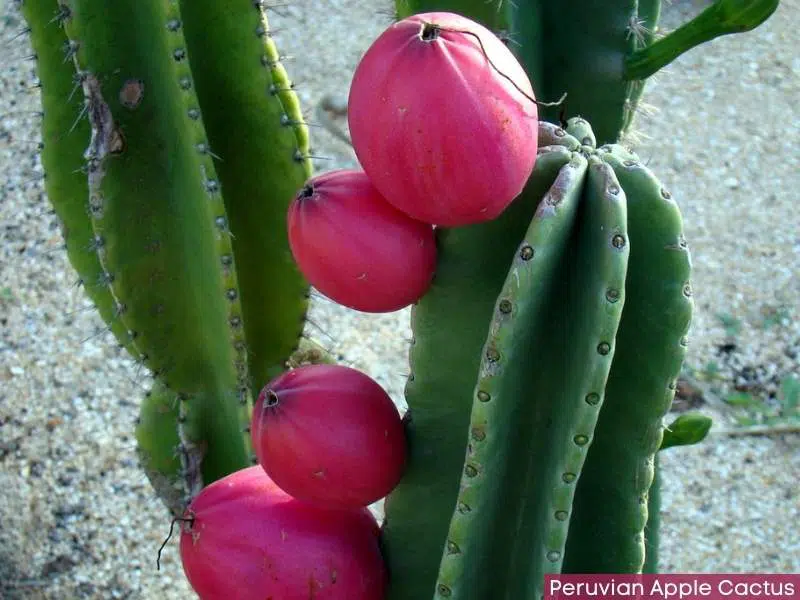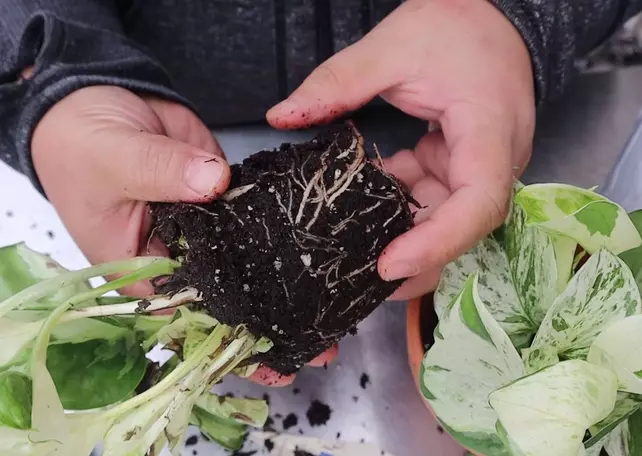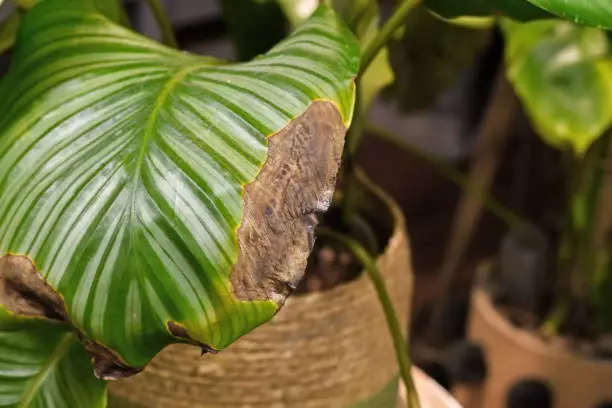Spider mites can be a pesky problem for Calathea plants. These tiny arachnids can quickly infest your Calathea and cause damage to the leaves, leaving them discolored and speckled.
One of the first steps in getting rid of spider mites on Calathea is to identify the problem. Look for signs of spider mites, such as webbing on the underside of leaves, tiny white or yellow speckles on the leaves, or curled and distorted leaves. Once you have identified the problem, there are several methods you can use to get rid of spider mites on Calathea plants.
One effective method for getting rid of spider mites on Calathea plants is to spray the leaves with a mixture of water and dish soap. The soapy water will suffocate the spider mites and help to remove them from the plant. Another option is to use a natural insecticide, such as neem oil or insecticidal soap, which can be effective in killing spider mites without harming the plant. With these methods and a little patience, you can successfully get rid of spider mites on your Calathea plants and keep them healthy and thriving.
Identifying Spider Mites Infestation
Spider mites are a common pest that can infest Calathea plants. Identifying the presence of spider mites is crucial to preventing damage to your plant. Here are some signs that your Calathea may be infested with spider mites:
- Webbing: Spider mites produce webbing on the underside of leaves, which can look like fine silk threads. This webbing can be difficult to see, but it is a clear indication of an infestation.
- White grainy debris: Spider mites also leave behind white, grainy debris on the leaves of your plant. This debris is actually the mites’ waste, and it can be a sign of a severe infestation.
- Symptoms: Spider mites can cause a variety of symptoms in Calathea plants, including yellowing leaves, stunted growth, and leaf drop. If you notice any of these symptoms, it’s important to inspect your plant for spider mites.
Performing the Shake Test
One way to determine if your Calathea is infested with spider mites is to perform the shake test. Here’s how to do it:
- Hold a white piece of paper under a leaf of your Calathea.
- Vigorously shake the leaf onto the paper.
- Inspect the paper for any small, reddish-brown dots. These dots are spider mites.
If you find spider mites on your plant, it’s important to take action immediately to prevent further damage.
Understanding Spider Mites
Spider mites are tiny arachnids that belong to the Tetranychidae family. They are common pests that can be found on indoor and outdoor plants, including Calathea.
Spider mites are very small, measuring only about 1/50 of an inch in length. They are usually reddish-brown in color and have eight legs. These pests feed on the sap of plants, which can cause significant damage to the foliage.
Spider mites reproduce quickly, and a single female can lay hundreds of eggs in her lifetime. The eggs hatch into larvae, which then develop into nymphs and finally into adult spider mites. The entire life cycle can take as little as one week, which means that a small infestation can quickly become a large one.
Spider mites are most active in warm, dry environments, which is why they are more common during the summer months. They can also be carried indoors on new plants or through open windows and doors.
It’s essential to identify and treat spider mite infestations as soon as possible to prevent damage to your Calathea. Look for signs such as yellow or brown spots on the leaves, webbing on the undersides of the leaves, and tiny red or black dots on the foliage.
In the next section, we’ll discuss some effective methods for getting rid of spider mites on Calathea.
Preventive Measures
Preventing spider mites on Calathea is the best way to avoid the hassle of dealing with an infestation. Here are some preventive measures you can take to keep your plants healthy and free of spider mites:
- Quarantine: Quarantine any new plants before introducing them to your Calathea. This will prevent the spread of spider mites to your other plants.
- Dust: Keep your Calathea clean and free of dust. Spider mites thrive in dusty environments, so wiping the leaves with a damp cloth can help prevent an infestation.
- Humidity levels: Spider mites prefer dry environments, so keeping the humidity levels high can help prevent an infestation. Mist your Calathea regularly or place a tray of water near the plant to increase humidity.
- Light: Calathea prefers bright, indirect light. Avoid placing your plant in low light conditions, as this can weaken the plant and make it more susceptible to spider mites.
- Open windows: Avoid placing your Calathea near open windows or doors, as this can introduce spider mites to your plant.
- Moist and humid environments: Spider mites thrive in dry environments, so avoid overwatering your Calathea. However, make sure the soil is moist and humid, as this will help keep your plant healthy and prevent spider mites from infesting the plant.
- Room temperature water: Use room temperature water when watering your Calathea. Cold water can shock the plant and make it more susceptible to spider mites.
- Underwatering: Underwatering can weaken your Calathea and make it more susceptible to spider mites. Make sure to water your plant regularly and keep the soil moist.
By following these preventive measures, you can keep your Calathea healthy and free of spider mites.
Natural Treatments
If you prefer to use natural methods to get rid of spider mites on your Calathea, there are a few options available. These treatments may take longer to work than chemical pesticides, but they are safer for the environment and your plant.
Ladybugs
Ladybugs are natural predators of spider mites and can be an effective way to control them. You can buy live ladybugs and release them into your Calathea’s environment. They will eat the spider mites and their eggs, helping to reduce the population.
Predatory Insects
There are several predatory insects that can be used to control spider mites. The lacewing is a common predator that feeds on spider mites, as well as other pests. You can buy lacewing larvae and release them into your plant’s environment. They will eat the spider mites and their eggs, helping to reduce the population.
Predatory Mites
The Phytoseiulus family of predatory mites is another natural way to control spider mites. These mites feed on spider mites and can be effective in reducing their population. You can buy these mites and release them into your Calathea’s environment.
Other Natural Predators
Other natural predators of spider mites include big-eyed bugs and minute pirate bugs. These insects feed on spider mites and can be effective in reducing their population. You can buy these insects and release them into your plant’s environment.
In conclusion, there are several natural methods to get rid of spider mites on your Calathea. While they may take longer to work than chemical pesticides, they are safer for the environment and your plant. By using natural predators such as ladybugs, predatory insects, and predatory mites, you can effectively control spider mites and keep your Calathea healthy.
Chemical Treatments
When dealing with a severe spider mite infestation on your Calathea, chemical treatments can be an effective option. However, it’s essential to use them carefully and follow the instructions to avoid damaging your plant or harming yourself. Here are some chemical treatments that you can consider:
- Insecticidal soap: This is a type of soap that is specifically designed to kill insects like spider mites. It works by suffocating the pests, and it’s relatively safe for your Calathea. You can buy insecticidal soap at your local garden center or make your own by mixing a few tablespoons of dish soap with water. Be sure to dilute it properly and test it on a small section of your plant before applying it to the entire plant.
- Neem oil: This is a natural oil that comes from the neem tree. It contains a compound called azadirachtin, which is toxic to spider mites. Mix neem oil with water and spray it directly on your Calathea. This treatment can also help prevent future infestations.
- Rubbing alcohol: This is a quick and effective way to kill spider mites on contact. Mix rubbing alcohol with water and spray it on your plant. However, be careful not to use too much alcohol, as it can damage your plant.
- Horticultural oil: This is a type of oil that is made from petroleum or vegetable oil. It works by suffocating the spider mites and their eggs. Mix horticultural oil with water and spray it on your Calathea. Be sure to follow the instructions carefully, as using too much oil can damage your plant.
- Soil drench: Spider mites can also live in the soil of your plant. To get rid of them, you can use a soil drench. Mix a solution of insecticidal soap or neem oil with water and pour it into the soil. This will kill any spider mites that are living in the soil.
It’s essential to remember that chemical treatments should be used as a last resort. Always try non-chemical methods first, and be sure to follow the instructions carefully when using chemical treatments.
Manual Treatments
Spider mites can be manually removed from Calathea plants with a few simple tools. Pruning shears can be used to cut off heavily infested leaves or branches, which should then be placed in a plastic bag and disposed of immediately to prevent further spread of the mites.
For less severe infestations, a strong stream of water from a hose or showerhead can be used to wash off the mites and their webs. Be sure to thoroughly spray the undersides of the leaves where the mites often hide.
If manual removal is not enough to control the infestation, a variety of natural and chemical treatments are available. However, it is important to carefully read and follow the instructions on any product used to avoid damaging the plant or harming beneficial insects.
Regular monitoring and early detection of spider mites can help prevent severe infestations and reduce the need for more intensive treatments.
Recovery and Monitoring
After treating spider mites on your Calathea, it’s important to monitor the plant’s recovery and take steps to promote new growth. Here are some tips for recovery and monitoring:
- Monitor regularly: Check your Calathea regularly for any signs of new spider mite infestations or other problems. Early detection and treatment can help prevent further damage to the plant.
- Promote new growth: Encourage new growth by providing your Calathea with the right conditions, such as proper lighting, humidity, and watering. You may also consider fertilizing the plant to give it a boost.
- Be patient: It may take some time for your Calathea to fully recover from a spider mite infestation. Be patient and continue to monitor the plant’s progress.
- Watch for signs of stress: Keep an eye out for any signs of stress, such as wilting or yellowing leaves. These could be signs of ongoing problems that need to be addressed.
- Consider preventive measures: To prevent future spider mite infestations, consider using preventative measures such as regular cleaning and pruning, and avoiding overwatering.
By following these tips, you can help ensure the health and vitality of your Calathea plant after treating spider mites.
Common Misconceptions
Calatheas are beautiful plants that can add a touch of tropical elegance to any room. However, they are also prone to spider mite infestations, which can be frustrating to deal with. Here are some common misconceptions about spider mites on Calatheas:
Misconception 1: Spider Mites Only Attack Unhealthy Plants
This is not true. Spider mites are opportunistic pests that will attack any plant they can. Even healthy plants can be infested with spider mites if the conditions are right.
Misconception 2: Chlorophyll is Destroyed by Spider Mites
While spider mites can cause discoloration and wilting, they do not destroy chlorophyll. Chlorophyll is the pigment that gives plants their green color and is essential for photosynthesis. Spider mites can damage the leaves, but they do not destroy the chlorophyll.
Misconception 3: Spider Mites Only Cause Stippling
Stippling is a common symptom of spider mite infestations, but it is not the only symptom. Other symptoms include discoloration, wilting, drought stress, curling, and brown spots. It is important to identify all the symptoms to properly diagnose a spider mite infestation.
Misconception 4: Drought Stress Causes Spider Mite Infestations
While drought stress can weaken plants and make them more susceptible to pests, it does not directly cause spider mite infestations. Spider mites are attracted to plants that are stressed, but they can also infest healthy plants.
Misconception 5: Curling Leaves are Always Caused by Spider Mites
Curling leaves can be caused by a variety of factors, including spider mites, but it is not always the cause. Other factors that can cause curling leaves include overwatering, underwatering, and temperature stress. It is important to identify the underlying cause of the curling leaves to properly treat the plant.
In conclusion, it is important to dispel these common misconceptions about spider mites on Calatheas to properly diagnose and treat infestations. Spider mites are opportunistic pests that can infest healthy plants, and they can cause a variety of symptoms beyond stippling. Proper identification of the symptoms and underlying causes is essential to effectively treat spider mite infestations.
Other Pests Affecting Calathea
While spider mites are a common pest affecting Calathea, there are other pests that can infest these plants. It is essential to identify and treat these pests promptly to prevent the spread of infestation and damage to the plant.
Thrips
Thrips are tiny insects that feed on the sap of plants, causing damage to the leaves and flowers. They can cause discoloration, distortion, and stunted growth of the plant. Thrips can be identified by their slender body, fringed wings, and asymmetrical mouthparts. They are usually found on the undersides of leaves.
To control thrips, you can use insecticidal soap or neem oil. You can also introduce natural predators like lacewings and ladybugs to the plants. It is essential to maintain good plant hygiene and remove any infected leaves or debris to prevent the spread of thrips.
Scale Insects
Scale insects are small, immobile insects that attach themselves to the leaves and stems of plants. They feed on the sap of the plant, causing yellowing, wilting, and leaf drop. Scale insects can be identified by their oval-shaped body and waxy coating.
To control scale insects, you can use insecticidal soap or neem oil. You can also use a soft-bristled brush to remove the insects from the plant. It is essential to maintain good plant hygiene and remove any infected leaves or debris to prevent the spread of scale insects.
Aphids
Aphids are small, pear-shaped insects that feed on the sap of plants, causing damage to the leaves and flowers. They can cause yellowing, curling, and stunted growth of the plant. Aphids can be identified by their small size, soft bodies, and long antennae.
To control aphids, you can use insecticidal soap or neem oil. You can also introduce natural predators like ladybugs and lacewings to the plants. It is essential to maintain good plant hygiene and remove any infected leaves or debris to prevent the spread of aphids.
In conclusion, while spider mites are a common pest affecting Calathea, there are other pests that can infest these plants. It is crucial to identify and treat these pests promptly to prevent the spread of infestation and damage to the plant. By maintaining good plant hygiene and using natural or chemical methods, you can control these pests and ensure the health of your Calathea plant.
Buying Calathea Plants
When buying Calathea plants, it is important to take a few precautions to ensure that you are not bringing home any unwanted pests. Here are some tips to follow:
- Purchase your Calathea plants from a reputable garden center or nursery. Avoid buying plants from street vendors or unknown sources, as they may be more likely to have pests or diseases.
- Inspect the plant thoroughly before purchasing. Look for any signs of pests, such as spider mites or mealybugs, and avoid any plants that appear to be infested.
- Check the soil for signs of fungus gnats, which can be a common problem with indoor plants. If you see any small flies buzzing around the soil, it may be best to choose a different plant.
- If you are buying a Calathea plant online, be sure to read reviews from other customers to ensure that the seller has a good reputation for providing healthy plants.
- When bringing your Calathea plant home, isolate it from your other plants for a few days to ensure that it is not carrying any pests or diseases.
By taking these precautions, you can help ensure that your Calathea plant stays healthy and free from pests. If you do notice any signs of a houseplant pest, such as spider mites, be sure to take action quickly to prevent the infestation from spreading to your other plants.
Frequently Asked Questions
What are some effective sprays for getting rid of spider mites on Calatheas?
There are several effective sprays that can be used to get rid of spider mites on Calatheas. Some of these sprays include insecticidal soap, neem oil, and horticultural oil. It is important to follow the instructions on the label carefully and to apply the spray evenly to all parts of the plant.
How do you identify spider mite damage on Calatheas?
Spider mite damage on Calatheas can be identified by the appearance of tiny yellow or white spots on the leaves. As the infestation progresses, the leaves may turn yellow or brown and begin to dry out. You may also notice webbing on the plant, which is a telltale sign of spider mites.
What are some natural remedies for getting rid of spider mites on Calatheas?
Some natural remedies for getting rid of spider mites on Calatheas include spraying the plant with a mixture of water and dish soap, using a solution of rubbing alcohol and water, or spraying the plant with a mixture of garlic and water. It is important to test any natural remedy on a small, inconspicuous area of the plant before applying it to the entire plant.
How do you prevent spider mites from infesting Calatheas?
To prevent spider mites from infesting Calatheas, it is important to keep the plant healthy and well-watered. Spider mites thrive in dry, dusty conditions, so it is important to keep the plant’s environment clean and humid. You can also use a neem oil spray or insecticidal soap as a preventative measure.
Can Calatheas recover from spider mite damage?
Calatheas can recover from spider mite damage if the infestation is caught early and treated promptly. However, if the infestation is severe, the plant may not recover and may need to be discarded.
Is neem oil a safe and effective treatment for spider mites on Calatheas?
Neem oil is a safe and effective treatment for spider mites on Calatheas. It works by disrupting the insect’s life cycle and preventing it from reproducing. Neem oil is also safe for humans and pets and does not harm beneficial insects such as bees and ladybugs.



